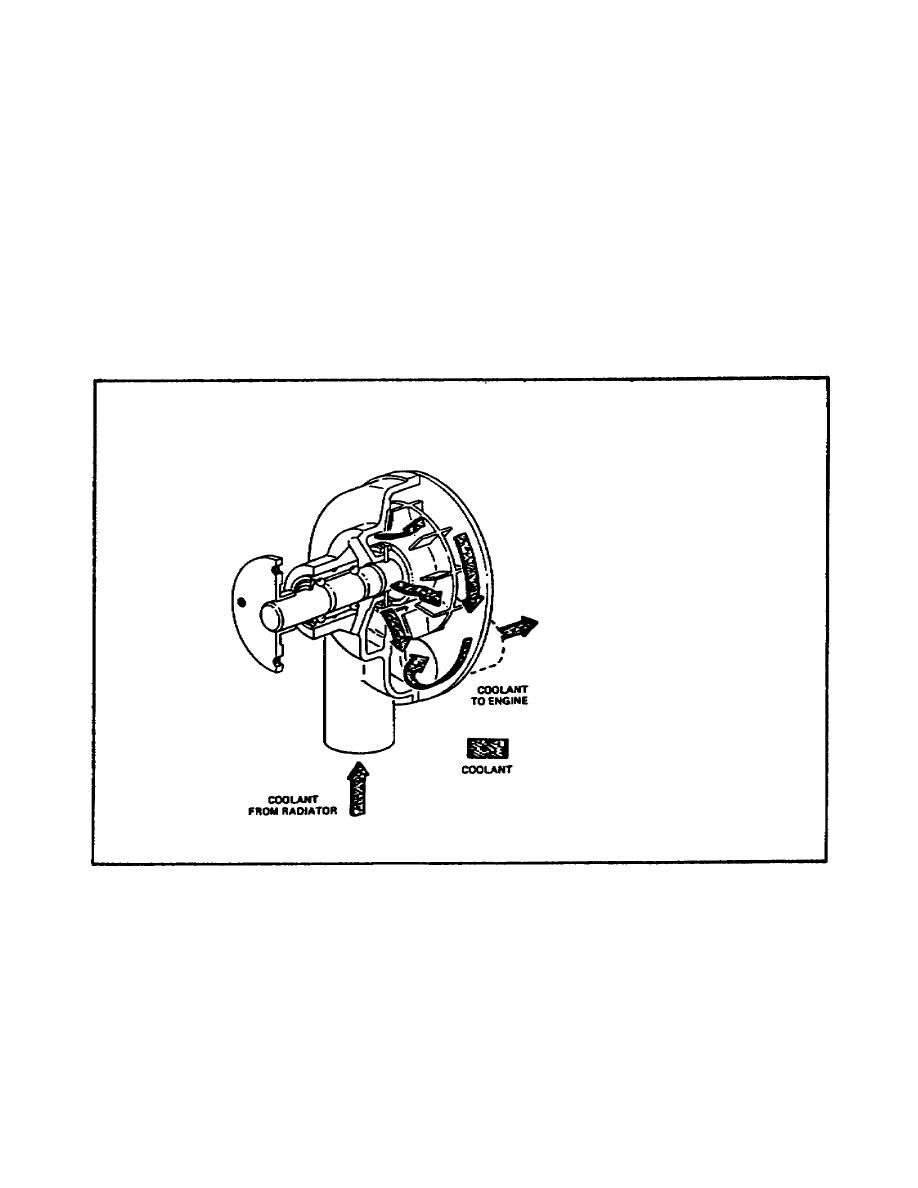
PRIN. OF INTERNAL COMBUSTION ENGINES - OD1619 LESSON 2/TASK 3
circulate the coolant. The pump, usually located on the front side of the engine
block, receives coolant from the lower tank and forces it through the water jacket
into the upper radiator tank. The pump is of a centrifugal type and has an
impeller with blades that force coolant outward as the impeller rotates. It is
usually driven by the engine crankshaft through a Vbelt. Advantages of a
centrifugal pump as a water pump are that it is inexpensive, circulates great
quantities of coolant for its size, and is not clogged by small amounts of foreign
matter. Another advantage is that a centrifugal pump permits a limited amount of
thermosiphon action after the engine is shut down to help prevent boilover. The
pump housing usually is cast from iron or aluminum. The impeller can be made of
iron, aluminum, or plastic. It rides on a shaft that is supported in the housing
on a sealed doublerow ball bearing. The pump shaft also has a springloaded seal
to prevent coolant leakage.
FIGURE 66. WATER PUMP CONSTRUCTION.
f. Fan and Shrouding (refer back to figure 64 on page 81). The fan pulls a large
volume of air through the radiator core so that engine heat can be dissipated
effectively. In most cases, the fan
85




 Previous Page
Previous Page
